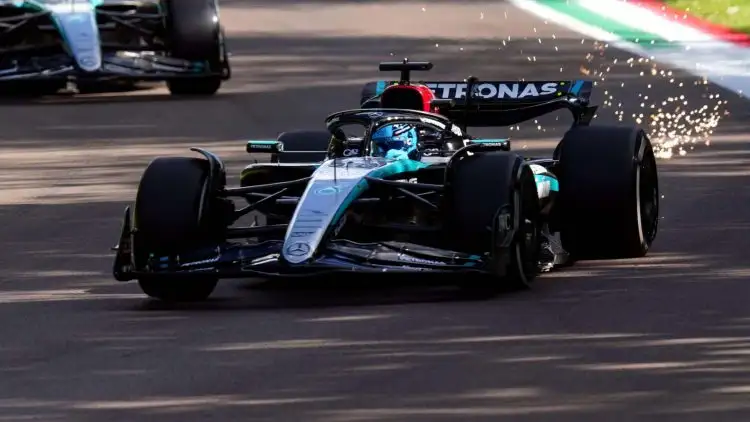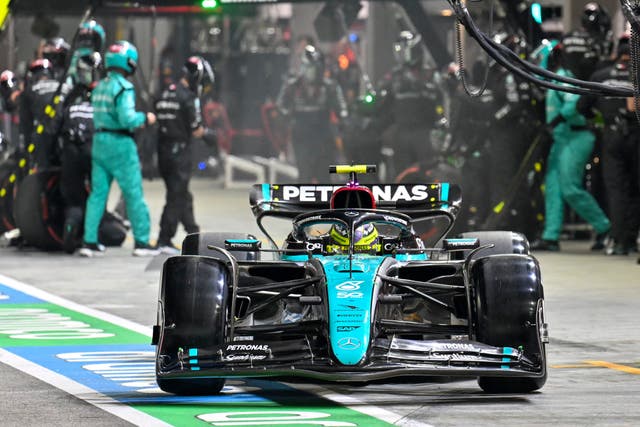The technical director of Mercedes, James Allison has revealed reasons behind George Russell’s extra pit stop at Imola over the weekend.
While clarifying that there was “no real inherent difference” between how he and team-mate Lewis Hamilton were driving, the age of his tyres were a significant factor in why he had to come in.
The two Mercedes drivers were running sixth and seventh at Imola for much of the race, and while Russell had been ahead of Hamilton, he ultimately paid the price for a pit stop that came too early in the race for him to make it to the end.
Russell made the point after the race that he had been ahead of Hamilton for most of the weekend, but ultimately was not going to be “sulking” about losing one place to his team-mate.
He gained the bonus point for fastest lap of the race as some kind of consolation, but the Mercedes technical director explained that he would not have had enough tyre life to reach the end of the race after pitting early on.
“The pace of George relative to Lewis on his second stint and corrected it for both the fuel mass and the tyre age the two cars were very well overlaid,” Allison explained in Mercedes’ post-Imola debrief.
“There was no real inherent difference between the way that Lewis was pedalling and the way that George was.
“The difference between the two cars was that George’s first stint length was much shorter, which meant that by the time he was out on his second stint with the hard rubber, his tyres were older than everyone else’s, which just meant that he had a longer stint to go and his tyres were that much more degraded compared to those he was on the track with at the same time.
“The pace of the car was about what it should be for that length of stint and that age of tyre.
“But that length of stint and that age of tyre was looking like it was just going to be quite marginal at the end of the race.
“On a precautionary basis, we decided that we would stop George a second time, put him on fresh rubber, get him that chance at fastest lap, which obviously is beneficial for the team on points, making sure that he had no risk of running out of rubber and suffering sort of premature failure towards the very end of the race.
“Nothing wrong with the tyre in that stint at all, really just paying the price for a first stint that was a little bit on the short side.”



